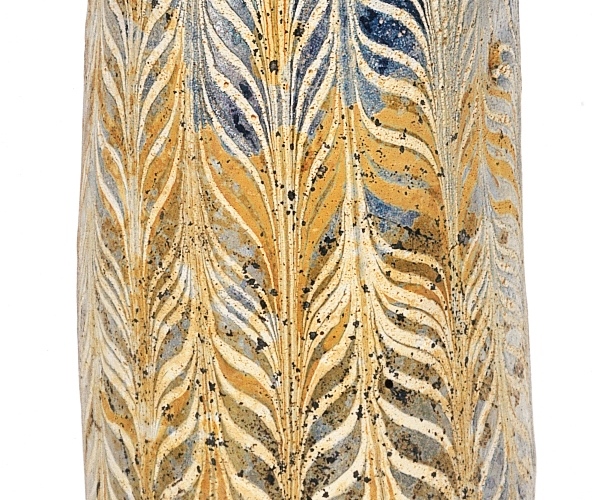Alabastron with gold stand
- Eastern Mediterranean
- 4th-3rd century BC
- Hellenistic
- glass
- H18.6×W5.1cm
The glass-making technique of core-forming declined around the 11th century BC, but it was revived around the 8th century BC. It then spread throughout the Mediterranean region from the 6th to the 3rd centuries BC. The zigzag pattern on the body was made by scratching bands of molten glass up and down with a pointed object.The base color, which may have originally been dark blue, has turned silver. To create the zigzag pattern, bands of yellow and white glass were scratched up and down. This cylindrical flask with two small handles is called an “alabastron.” It is a perfume bottle of Egyptian origin modeled after Egyptian containers carved from alabaster, a translucent white stone. It has a stand made of gold.


